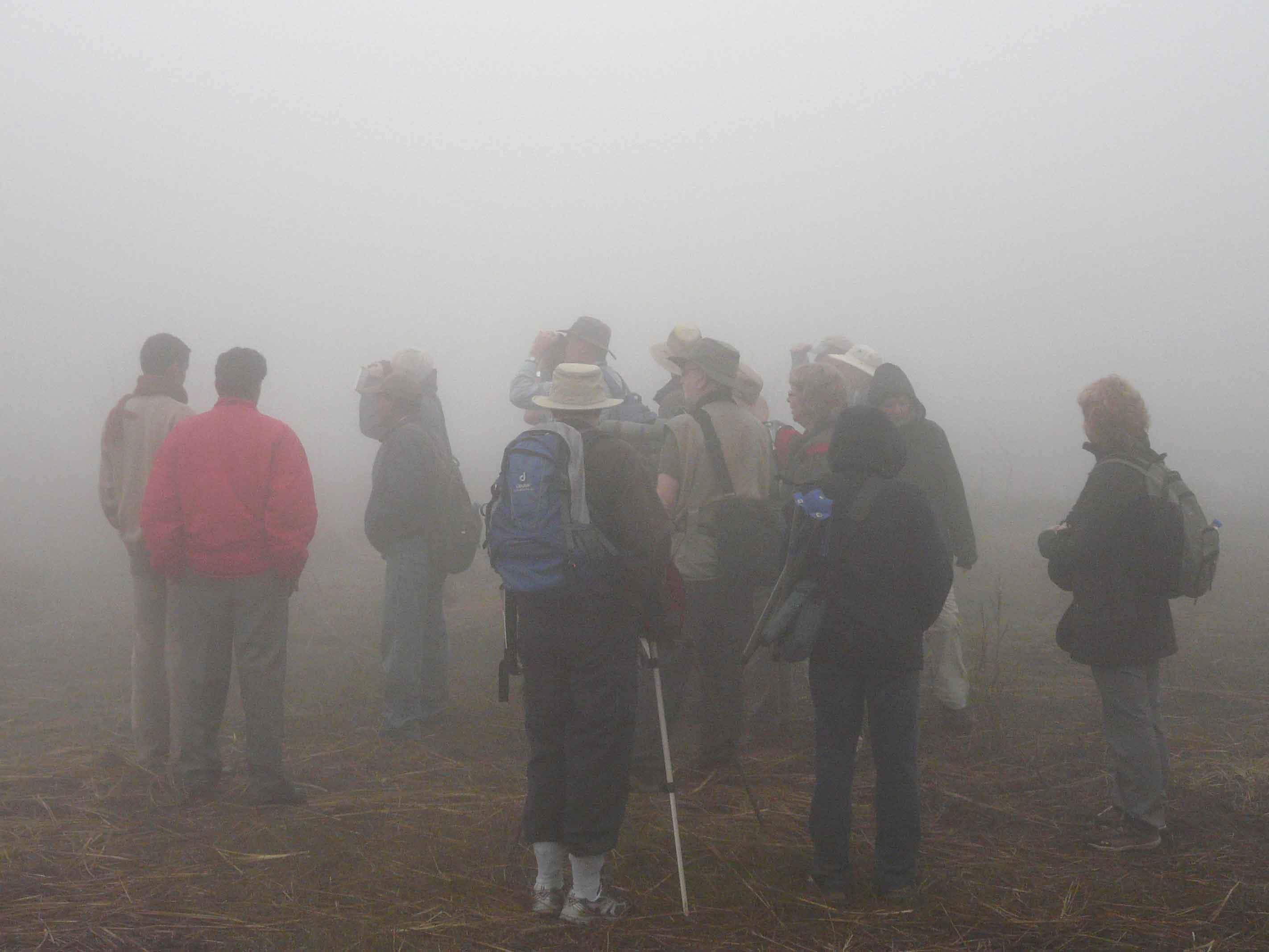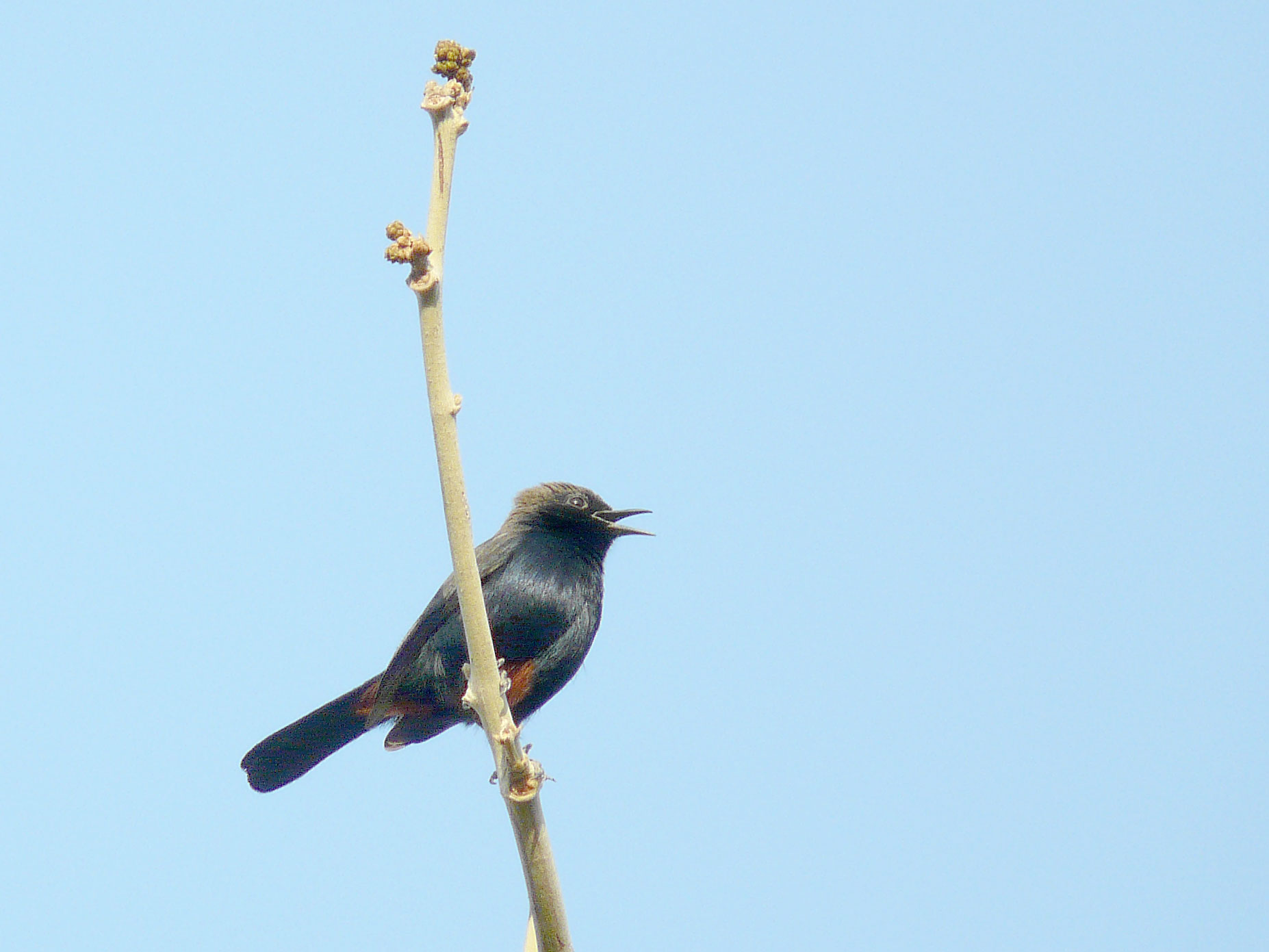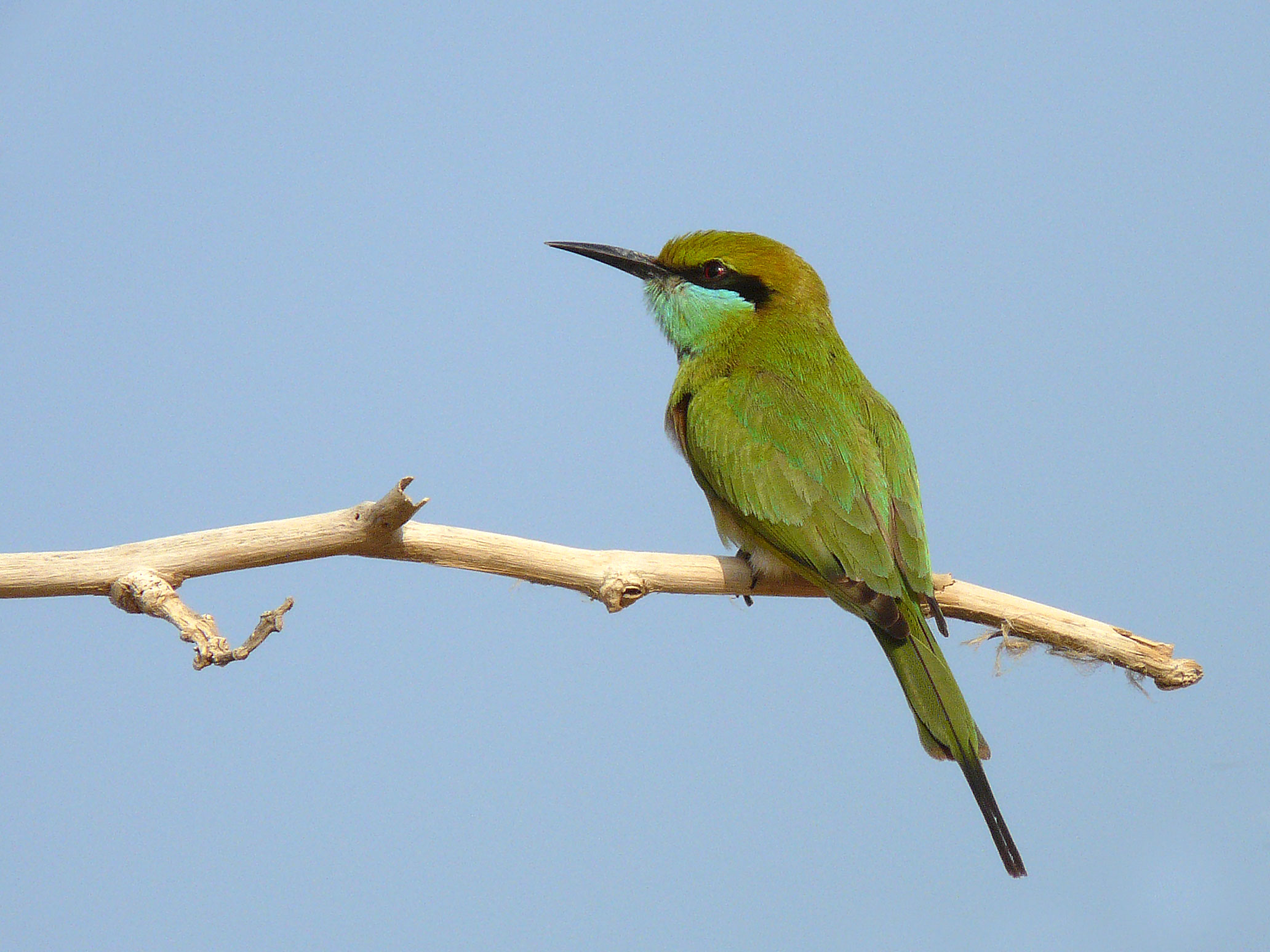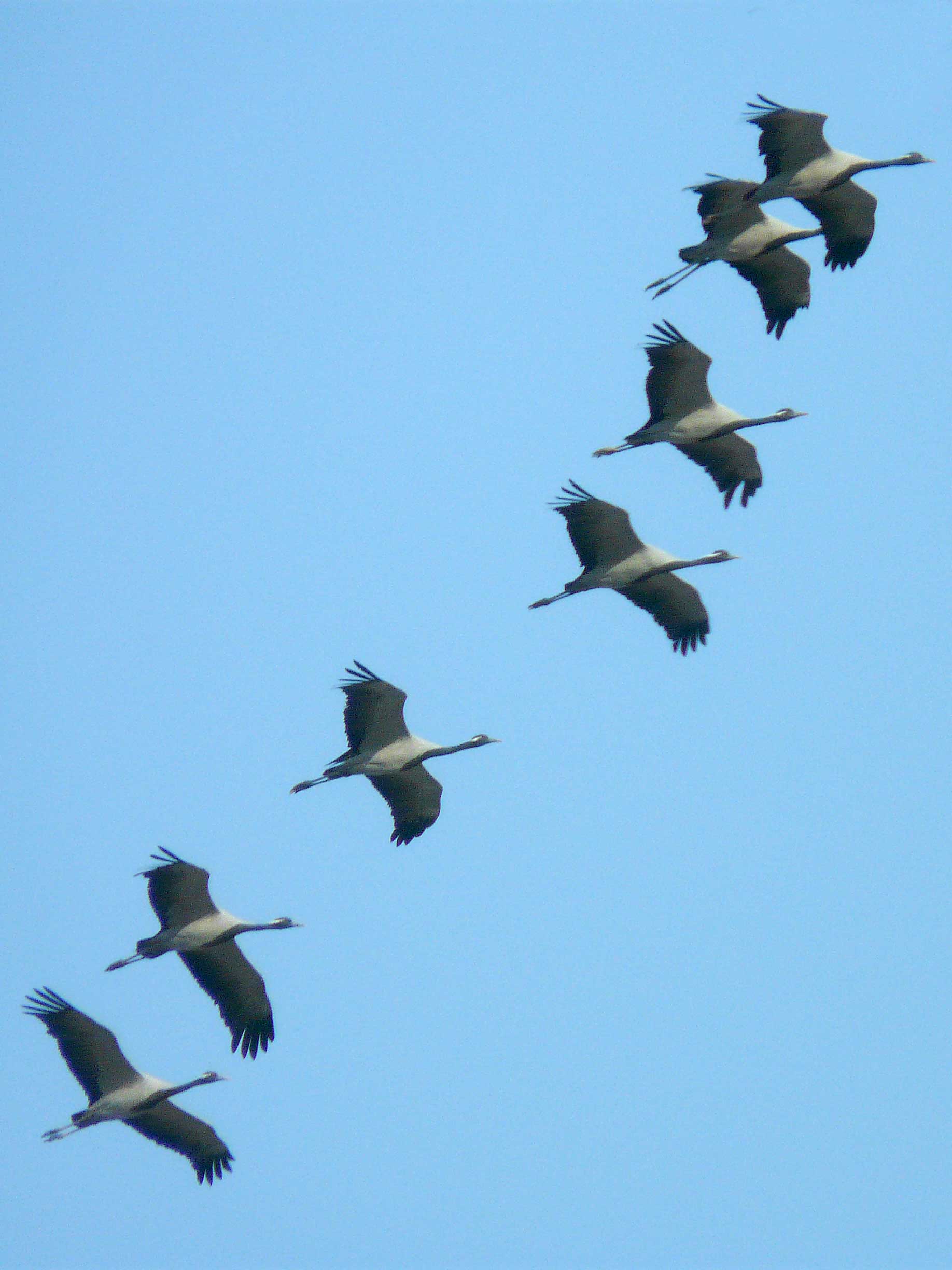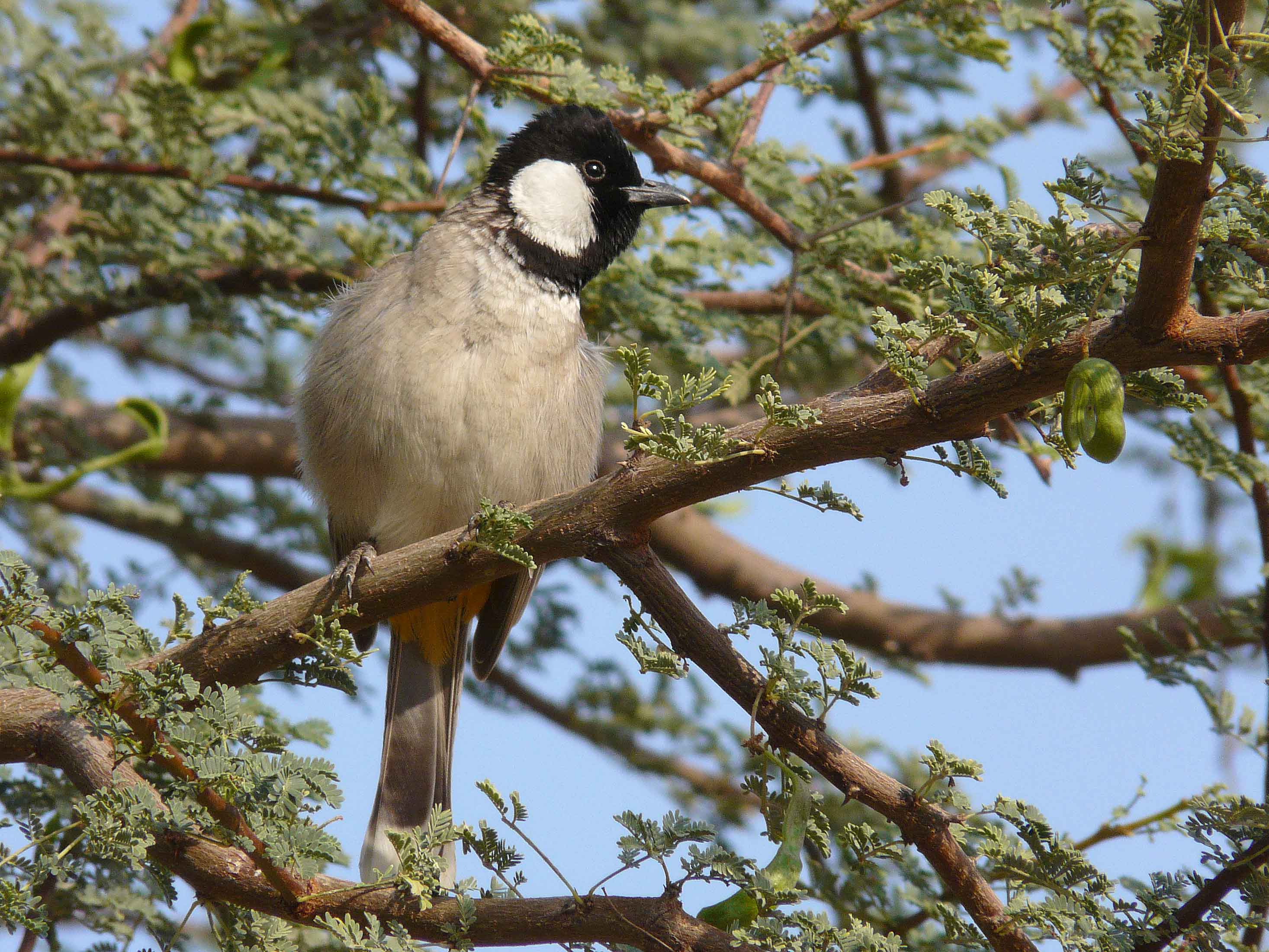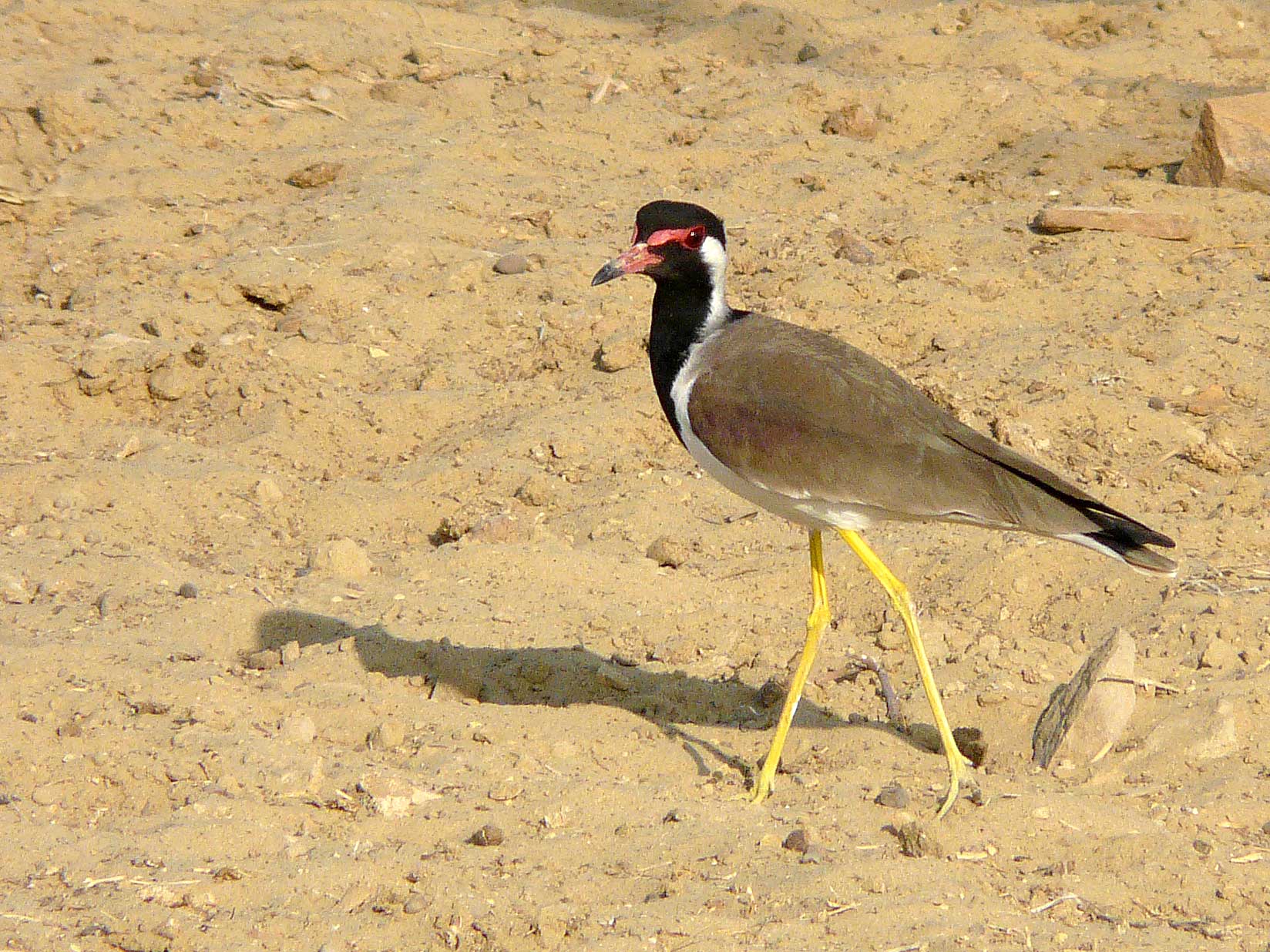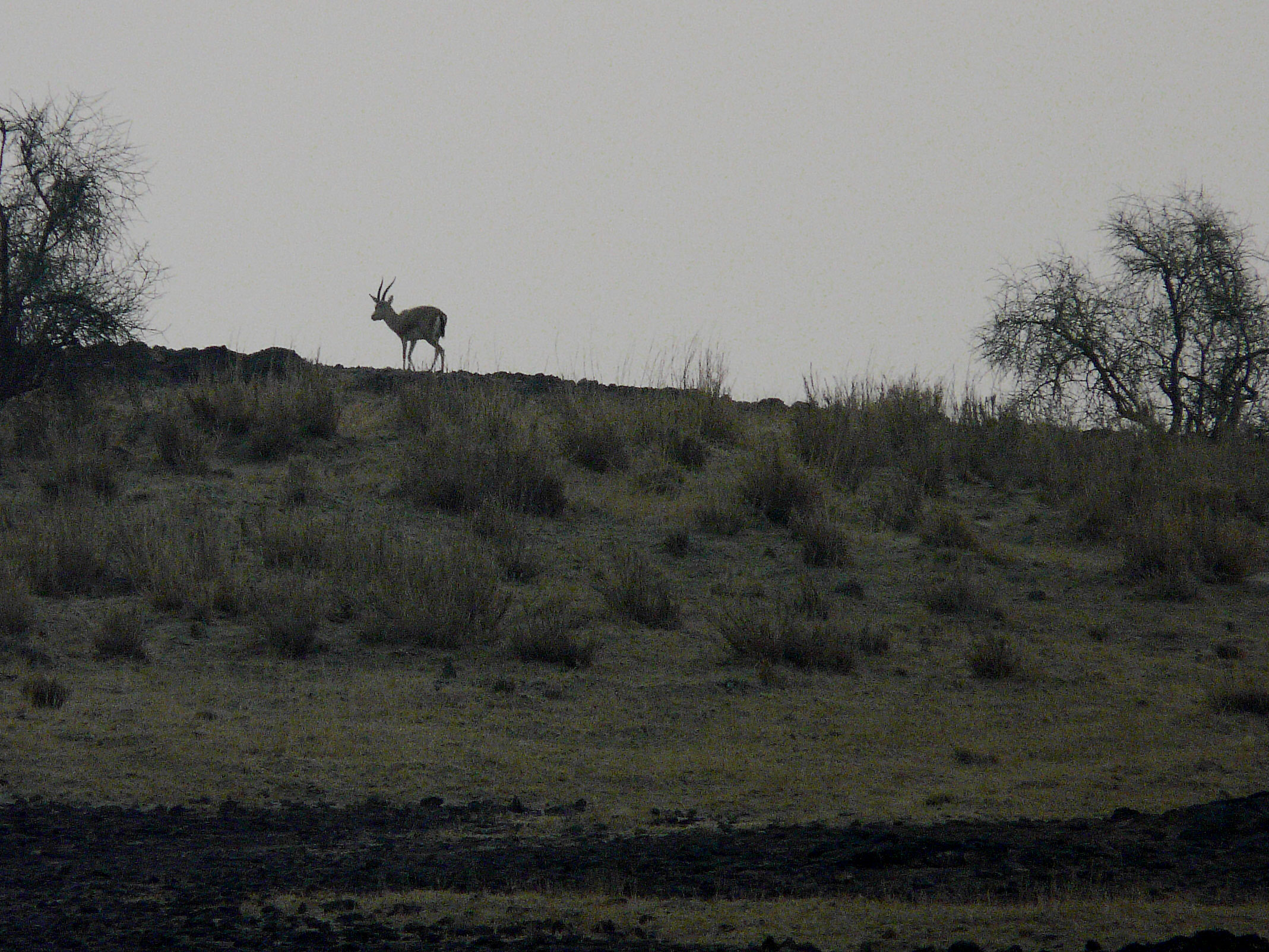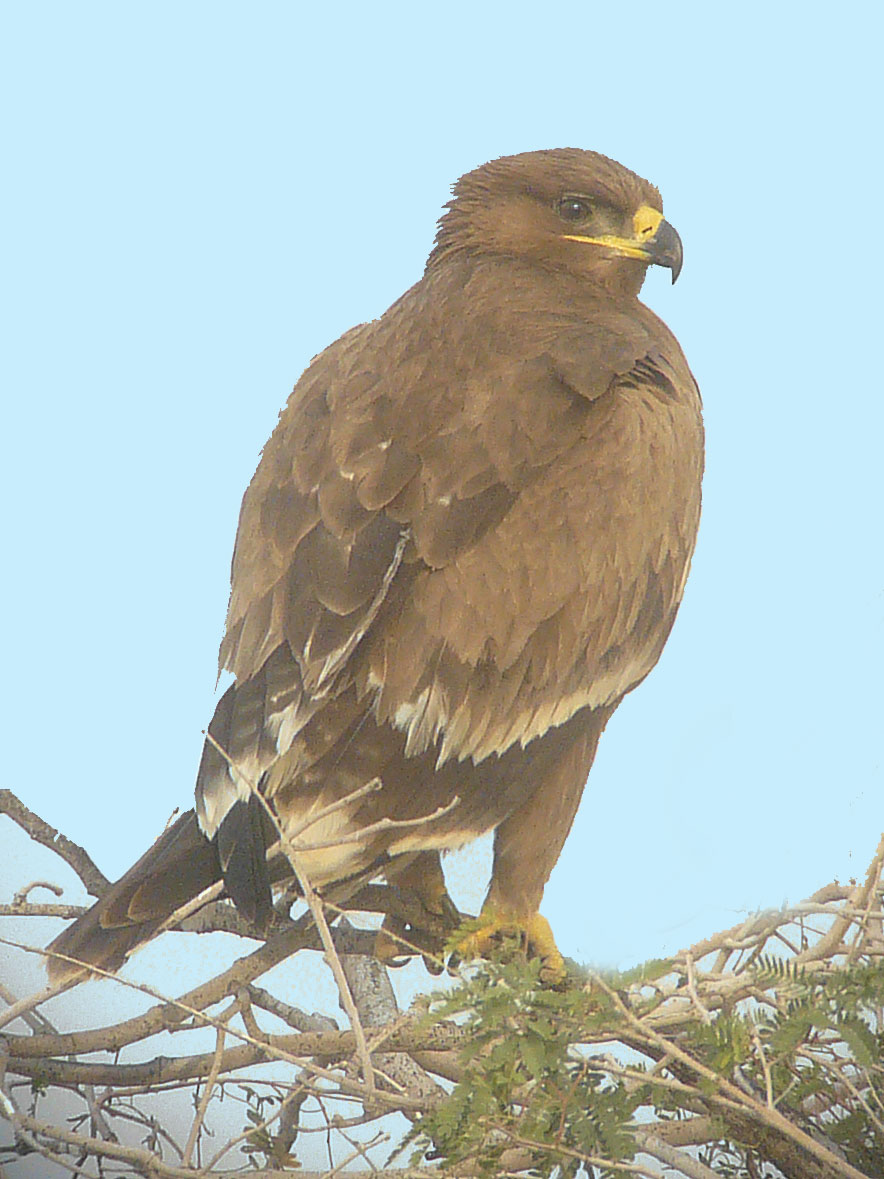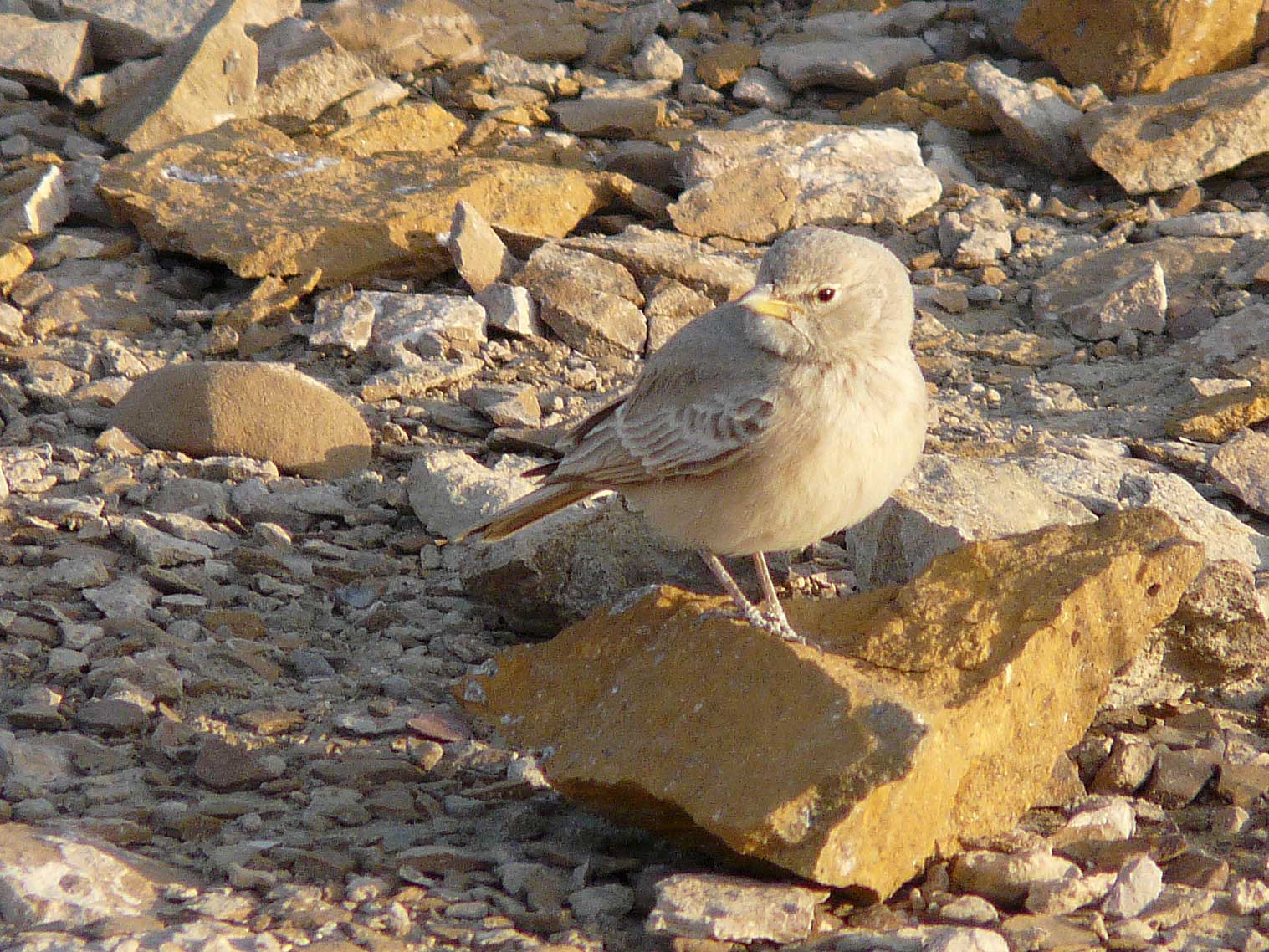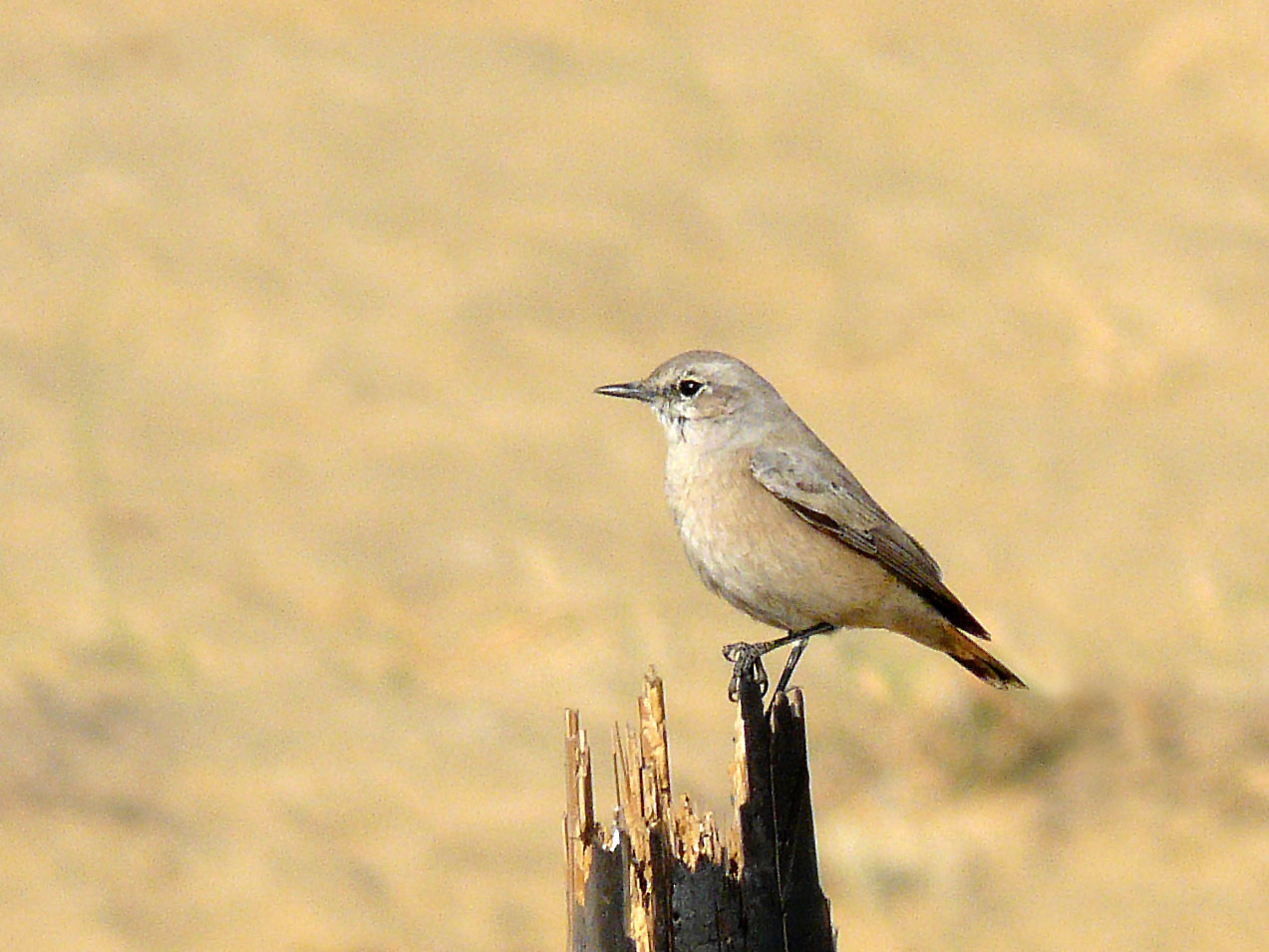 Northern
India
Trip
Report
Northern
India
Trip
Report

25 January - 17 February 2010
Introduction
Our little nature travel club is extending its reach, this time to
India. As there is little shortage of Indian birding trip reports
we'll not go into too much detail here, but will mention highlights and
other information that might be useful to readers. I had
been to northern India once earlier, in 1989, on a trip with Kingbird
Tours. That trip was focussed solely on Birds, Birds,
Birds, but I drew from my experience to help plan this trip.
For this trip, as is our practice, we utilised the expertise of local
operators and guides. This not only usually results in
lower trip costs (not paying for a non-resident leader(s) to accompany
the group) but is also, we believe, a more responsible approach to
eco-tourism, providing business to in-country enterprises.
We did our research and, with Bo Bolean's (The Fat Birder) hearty
endorsement, we contacted Asian Adventures. We wished to
design a trip that included a 50/50 mix of history and nature in
northern India, and with the careful advice of Mohit Aggarwal, one of
the two co-owners, he and I created a 23-day itinerary that seemed to
capture that balance.
And, as the following report illustrates, we were not
disappointed. It was a spectacular trip.
It was, however, marred by an unforseeable accident near the end of the
trip, one that seriously injured one of our group. Any
eco-tourism company's reputation is built upon not just how well they
plan and implement a tour, but especially by how they react and respond
to the unexpected. And Asian Adventures handled our crisis with
commendable speed, efficiency, courtesy, and concern.
The accident occurred in Corbett National Park, at the Dhikala Forest
Lodge. We were embarking via elephant on a tiger safari, and one
of the elephants (domestic, female, and typically calm and placid)
decided to charge a neighbouring elephant. Four of our group were
thrown to the ground, along with the mahoot. The mahoot and one
of our group were badly injured, requiring medical evacuation.
(An aside -- this accident was unprecedented, and news of it spread
like wildfire. Upon our arrival at the local clinic we were
beseiged by dozens of local paparazzi, all anxious to get the "scoop"
on this unique accident. We made the front page of various Hindi
daily papers the next morning, as well as the national Hindi TV news.)
On the
plus side -- Asian Adventures.
Once
we
were
able
to
contact
them
(an
adventure
in
itself,
as
there
was
poor
cell
reception
in the park) they organised the following: an ambulance from Delhi to
meet with the local ambulance; alternative accommodation for our group
for that night (no-one wished to remain near the scene of the traumatic
accident); a consultation with a local doctor; a private room for our
injured participant in a good hospital in Delhi; a hotel room for me
nearby the hospital; a bilingual staff member to be at our injured
party's bedside 24 hours a day (to facilitate communications with
hospital staff, and to communicate with me); transportation for me so
that I could commute back and forth between the hotel and hospital as
the situation warranted; obtaining whatever supplies we required;
providing me with a cell phone so that I could communicate with our
group and with family members; and assisting in the convoluted
bureaucratic processes required to facilitate the air transfer of our
group member back home to Europe. And so much more. . . My
heartfelt thanks to Mohit and all his staff.
On the
negative side -- the Director of Corbett National Park. He
hid in his office for over an hour after the accident (though the
office was only 200 metres distant), and only emerged once I threatened
to go inside. His first words to me were to remind me that the
park is not responsible for any accidents that occur within its
boundaries. He refused to permit a helicopter evac (we were
concerned regarding the possibility of spinal injury, and the roads are
bad), and cited the inflexible regulalations in the Park's Constitution
regarding helicopter use. He did not offer the use of his cell
phone, though his office was the only place in the area with a good
signal. He did not talk with any members of our group, most of
whom were in some degree of shock. He did not offer the use of
the park's first-aid kit (we had our own, but still. . .) He
provided no guidance to his staff who, in the absence of his direction,
stood around doing nothing (with the exception of various contracted
park guides, who were quite helpful, taking us to the only site where
cell phone coverage was possible, and also offering us the use of their
cell phones). He completely ignored the injured mahoot. He
retreated, with a fellow park director, to a nearby salon for tea and
bisquits, so they could determine how best to minimise the impact of
this accident on their respective reputations, especially in light of
the conference they were going to host the following day, on Tiger
Conservation.
The Director's name is R.K. Mishra, and he has no park nor conservaton
expertise, but is, instead, the beneficiary of a political patronage
appointment. I fear for the future of the park and its tigers
with such an incompetant person in charge. It should come as no
surprise that everyone in the area who is passionate about, profits
from, or works for, Corbett National Park, detests Mr. Mishra.
End of sermon, and on to the trip report.
Part
1: 25-31 January, 2010
The first week of our trip was much more devoted to
history than birds.
But we kept our binoculars and cameras handy at all times.
Day 01 -
January 25, Monday: New Delhi
We arrived at Delhi International airport at 0115 hours, and were
met
by the representative of Asian Adventures, in particular Abhisheik, who
was our constant companion for the trip: organising, problem-solving,
liaising with head office, and answering the endless questions of our
curious group.
We spent
the morning at leisure, birding in a local neighbourhood park
near our hotel, the Star
Grand Villa. The biggest surprise for me was encountering
Brown-headed Barbet, a species that I’d missed entirely on my previous
visit to India.
In the afternoon we visited Humayun's Tomb
(a World Heritage Site), and
did some birding on grounds. On all our visits to historic sites
and other cultural resources we were accompanied by professional guides
contracted through Asian Adventures. And we were also accompanied
by at least one birding guide, beginning with Ganesh (up to and
including Rhanthambore), then Rataan Singh (Bharatpur through
Corbett National park), and finally, for the last couple of days, Nick
(in Pangot). All were experienced and capable guides, and I can
personally recommend the first two (I wasn't with the group in Pangot -
see above).
Day List Highlights:
Laughing Dove
Yellow-footed Pigeon
Indian Gray Hornbill
Brown-headed Barbet
Hume’s Warbler
Greenish Warbler
Oriental Magpie-Robin
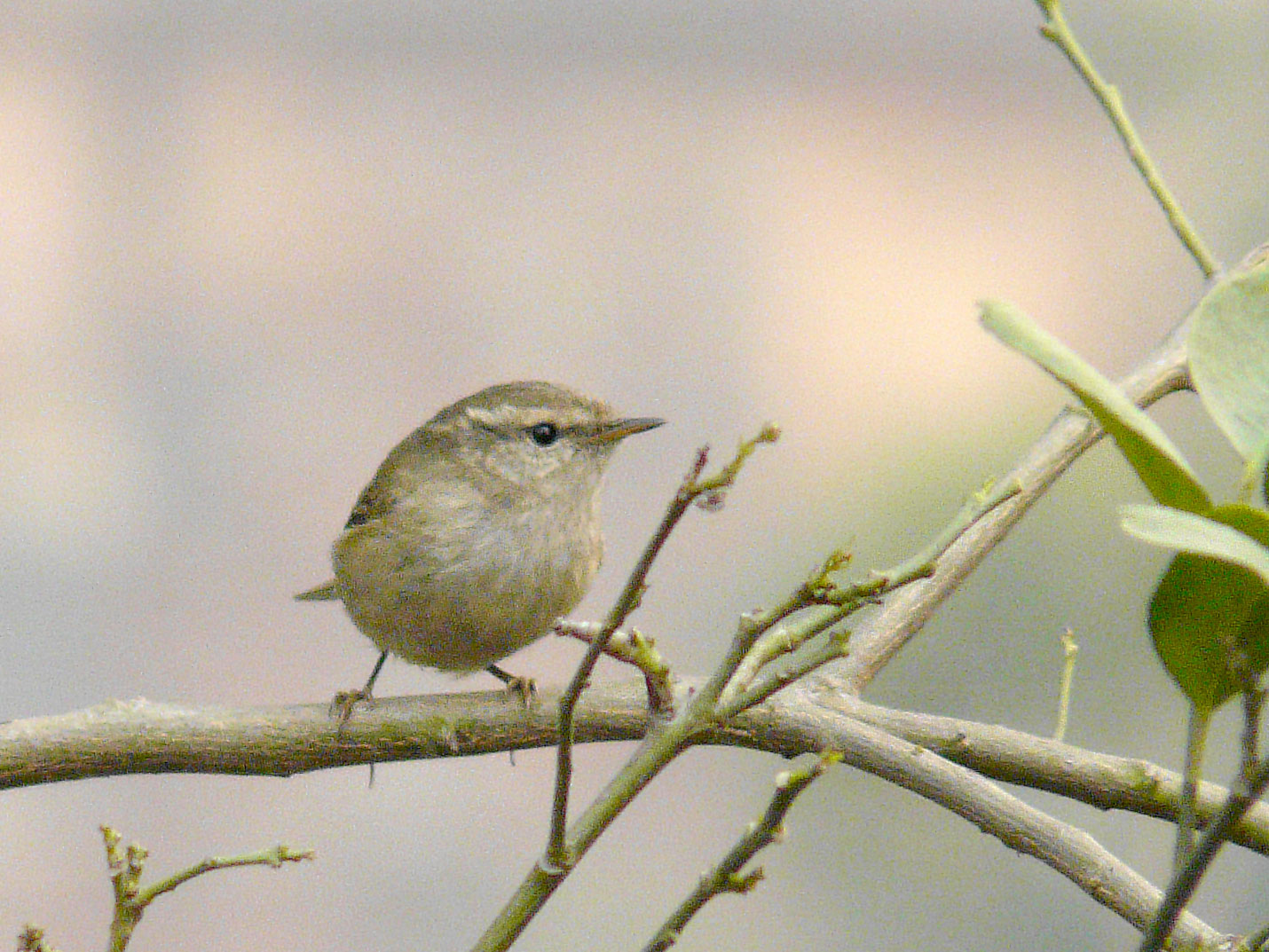
Hume's
Warbler, photo © 2010 by
Blake Maybank
Day 02 -
January 26, Tuesday: New Delhi, then train to Jodhpur
Morning – A
birding
excursion to Sultanpur
National
Park, some 43 km outside of Dehli. We suffered terrible
viewing conditions – a thick fog, which limited visibility to a few
metres or less. And because of the fog the drive to the jheel in
the pre-dawn hours was
rather frightening. It was very frustrating, when at the park, to
hear birds but be unable to see them, whether warblers in the
trees or cranes flying low overhead. We eventually gave up and
returned to Delhi, where the fog cleared in mid-afternoon.
A quick video illustrating the frustrating experience of trying to
birdwatch in thick fog at Sultanpur National Park, outside of Delhi,
India. On the video you can clearly hear the calls of Common
Cranes and Sarus Cranes, but neither could be seen even though they
were only a few metres away.
Afternoon – more Delhi
sightseeing, at Qutub Minar.
2055 hours – overnight train to Jodhpur. Most of our gear went
with the bus and driver.
Day List
Highlights
(of 59 species in total, many (too many) heard-only):
Indian Spot-billed Duck
Black-headed Ibis
Sarus Crane (heard only!, and
just a few metres away)
Common Crane (heard only!,
and
just
a
few
metres
away)
Alexandrine Parakeet
Spotted Owlet (nesting in wall of Qutab Minar)
Black-rumped Flameback
Ashy Prinia
Plain Prinia
Moustached Warbler
Brooks’s Leaf-Warbler
Bluethroat
Large Gray Babbler
Bengal Weaver
Red Avadavat
Sultanpur
Jheel
National
Park
in
the
fog.
Sarus
Cranes
are
calling
a
few
metres
away.
.
.
.
sigh.
Photo © 2010 by Blake Maybank.
Day 03 -
January 27, Wednesday: Jodhpur
Morning arrival at 0800 hours in Jodhpur. We spent the day
exploring the culture and history of Jodhpur, at Mehrangarh Fort and
Umaid
Bhavan
Palace.
A short video illustrating how to properly tie a turban.
Shot at
the Mehranghar Fort, in Jodphur, India.
Day List Highlights
(of 33 species):
Booted Eagle
River Tern
Green Bee-eater
A short video illustrating how much fun it is to drive in the traffic
of Jodphur, India.
Overnight at the delightful Inn Season Hotel.
Indian
Robin.
Photo
©
2010
by
Blake
Maybank.
Green
Bee-eater.
Photo
©
2010
by
Blake
Maybank.
Day 04 -
January 28, Thursday: Jodhpur-Kheechan-Jaisalmer
Morning Jeep Safari
-
Part of the group went birding in the scrubby countryside, with the
rest
visiting local villages.
We had an afternoon drive to Jaisalmer, stopping en route at Kheechan
to
see the large congregation of Demoiselle Cranes. Arrived in
Jaisalmer in the evening.
Day List Highlights
(of 60 species):
Jungle Bush-Quail
Slender-billed Vulture
Pallid Harrier
Steppe Eagle
Demoiselle Crane (hundreds)
Greater Coucal
Indian Roller
Eurasian Hoopoe
Bay-backed Shrike
Plain Martin
White-eared Bulbul
Desert Wheatear
Isabelline Wheatear
Demoiselle
Cranes.
Photo
©
2010
by
Blake
Maybank.
Overnight stay in Hotel Gorbandh Palace.
Day 05 -
January 29, Friday: Jaisalmer
We enjoyed a combination of local sightseeing and birding, while
awaiting our permits for Desert National Park (Ganesh spent much of the
day going from office to office to office. . .). The focus of our
attention was the Golden City's Fort, which stands
on a ridge of
yellowish sandstone, which contains the palace and several ornate Jain
temples. The main attractions inside the fort are: Raj Mahal (Royal
palace), Jain temples and the Laxminath temple.
Day List Highlights
(of 28 species)
Long-legged Buzzard
Wood Sandpiper
Temminck’s Stint
White-eared
Bulbul.
Photo
©
2010
by
Blake
Maybank. Red-wattled-Lapwing. Photo © 2010 by
Blake Maybank.
Overnight stay in Hotel Gorbandh Palace.
Day 06 -
January 30, Saturday: Desert National Park
We enjoyed a full-day excursion to Desert National Park. Once
in the core protected area of the park (the portion fenced off to
exclude cattle) we encountered very few people, and no other
birders. A couple of water troughs near the park HQ were quite
productive of birds. The vulture diversity was
unexpected. This was our first full day of (non-foggy)
birding, and
we enjoyed quality, as opposed to quantity, which is to be expected in
a desert.
Desert
National
Park
at
dawn.
Photo
©
2010
by
Blake
Maybank.
A few quick panoramic sweeps from
different areas of Desert
National Park, in Rajasthan, India,
in an attempt to provide a measure
of the landscape.
Day List Highlights
(of 44 species)
Egyptian Vulture
Slender-billed Vulture
Himalayan Griffon
Eurasian Griffon
Cinereous
Vulture
Red-headed Vulture
Pallid Harrier
Indian Spotted Eagle
Tawny Eagle
Steppe Eagle
Indian
Bustard (2)
Cream-colored Courser
Chestnut-bellied Sandgrouse
Eurasian Wryneck
Southern Gray Shrike
Black-crowned Sparrow-Lark
Desert Lark
Bimaculated Lark
Greater Short-toed Lark
Rufous-fronted Prinia
Asian Desert Warbler
Red-tailed Wheatear
Desert Wheatear
Isabelline Wheatear
Trumpeter
Finch (12)
Steppe
Eagle.
Photo
©
2010
by
Blake
Maybank.
Before supper we went on a camel safari into a dune area of the
park,
where we enjoyed the sunset, accompanied by Kingfisher Beer. A
great end to the day.
Overnight stay in Rajasthan Desert Safari Camp.
Day 07 -
January 31, Sunday: Desert National Park to Jodhpur
We birded around the Safari Camp before and after breakfast, after
which we drove to Jodhpur, stopping enroute at Osian. Osian is famous
as home to the cluster of ruined Brahmanical and Jain temples dating
from the 8th to 11th centuries.
Overnight stay in Inn Season Hotel.
Day List Highlights
(of 36 species)
Emerald Dove
Desert Lark
Wire-tailed Swallow
Gray-headed Canary-Flycatcher
Red-tailed Wheatear
Desert Wheatear
White-browed Fantail
Desert
Lark.
Photo
©
2010
by
Blake
Maybank.
Red-tailed Wheatear. Photo
© 2010 by Blake Maybank.
 Northern
India
Trip
Report
Northern
India
Trip
Report

 Northern
India
Trip
Report
Northern
India
Trip
Report


